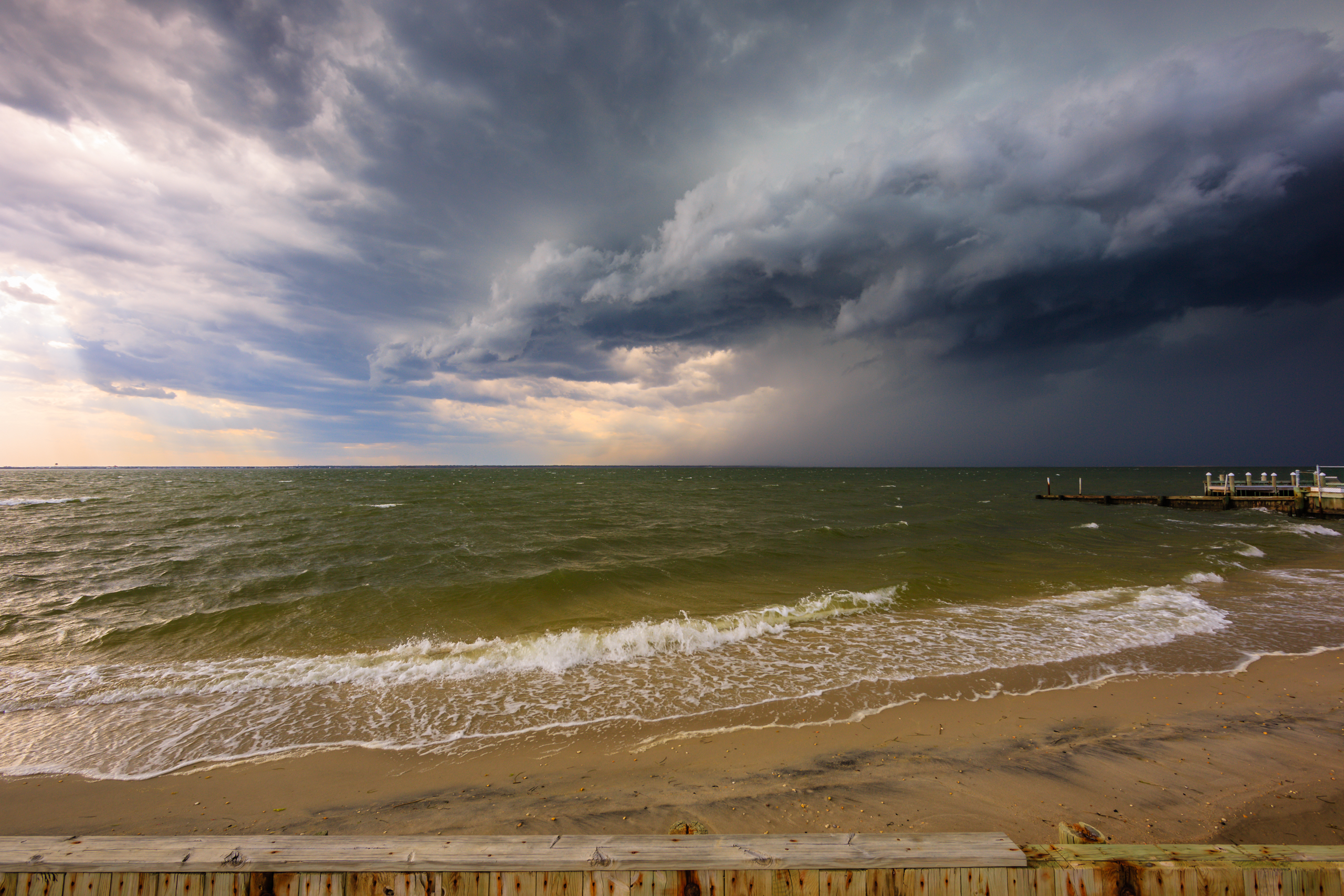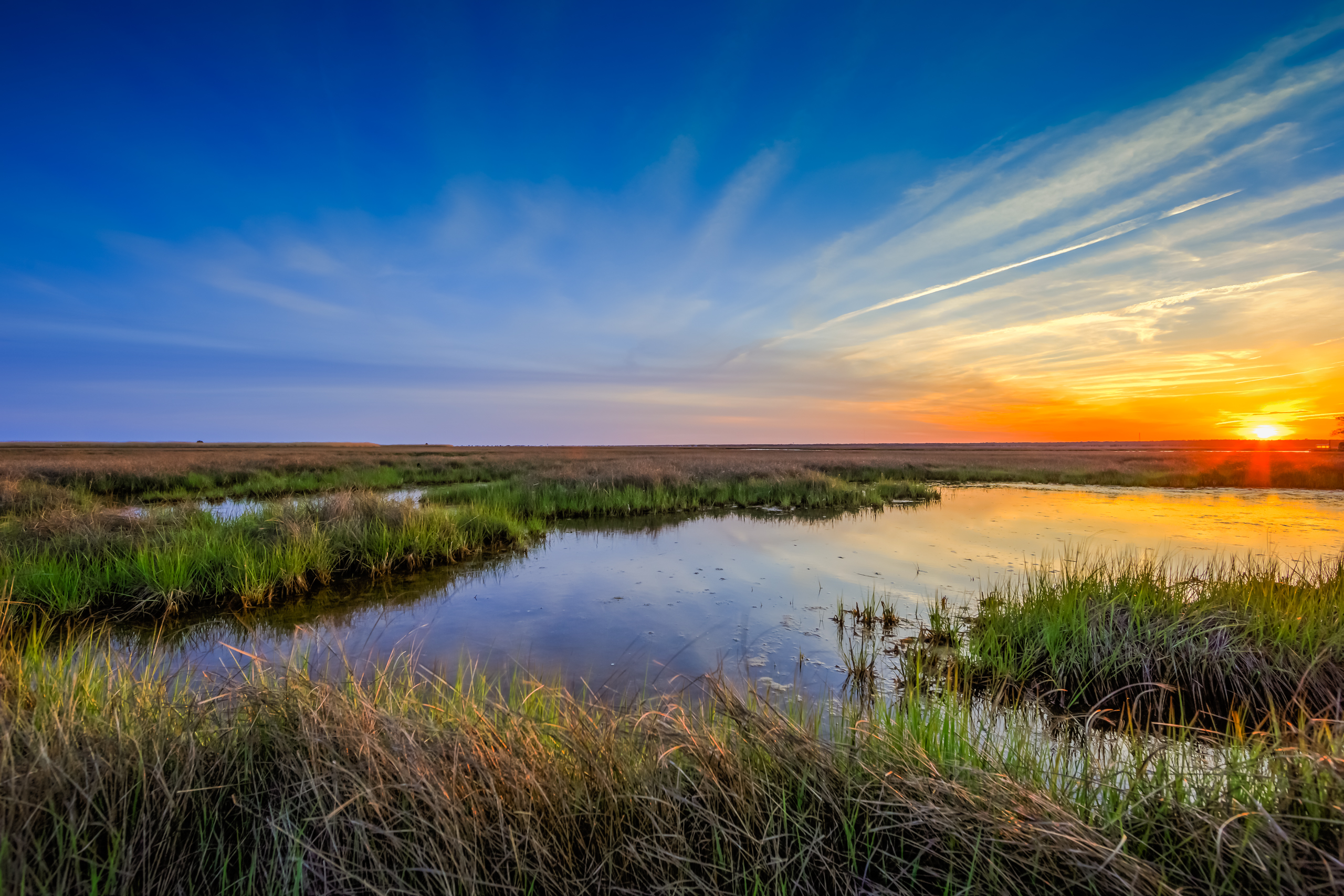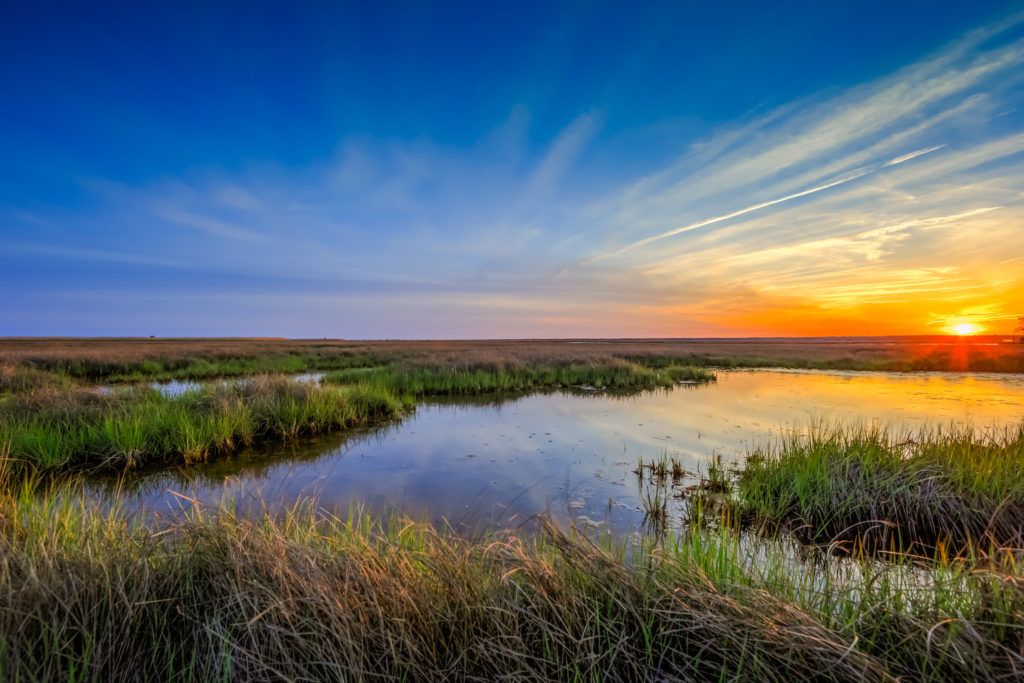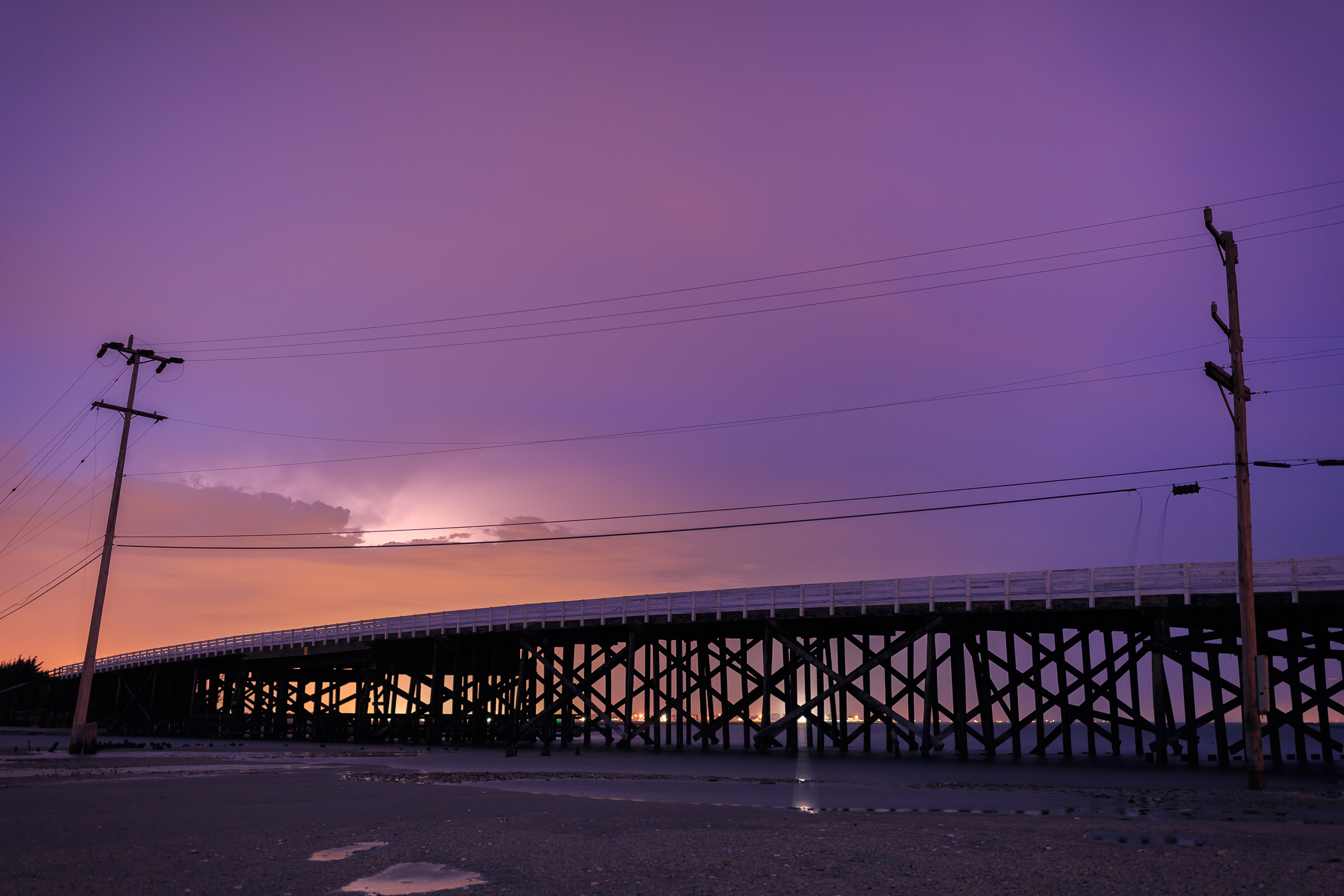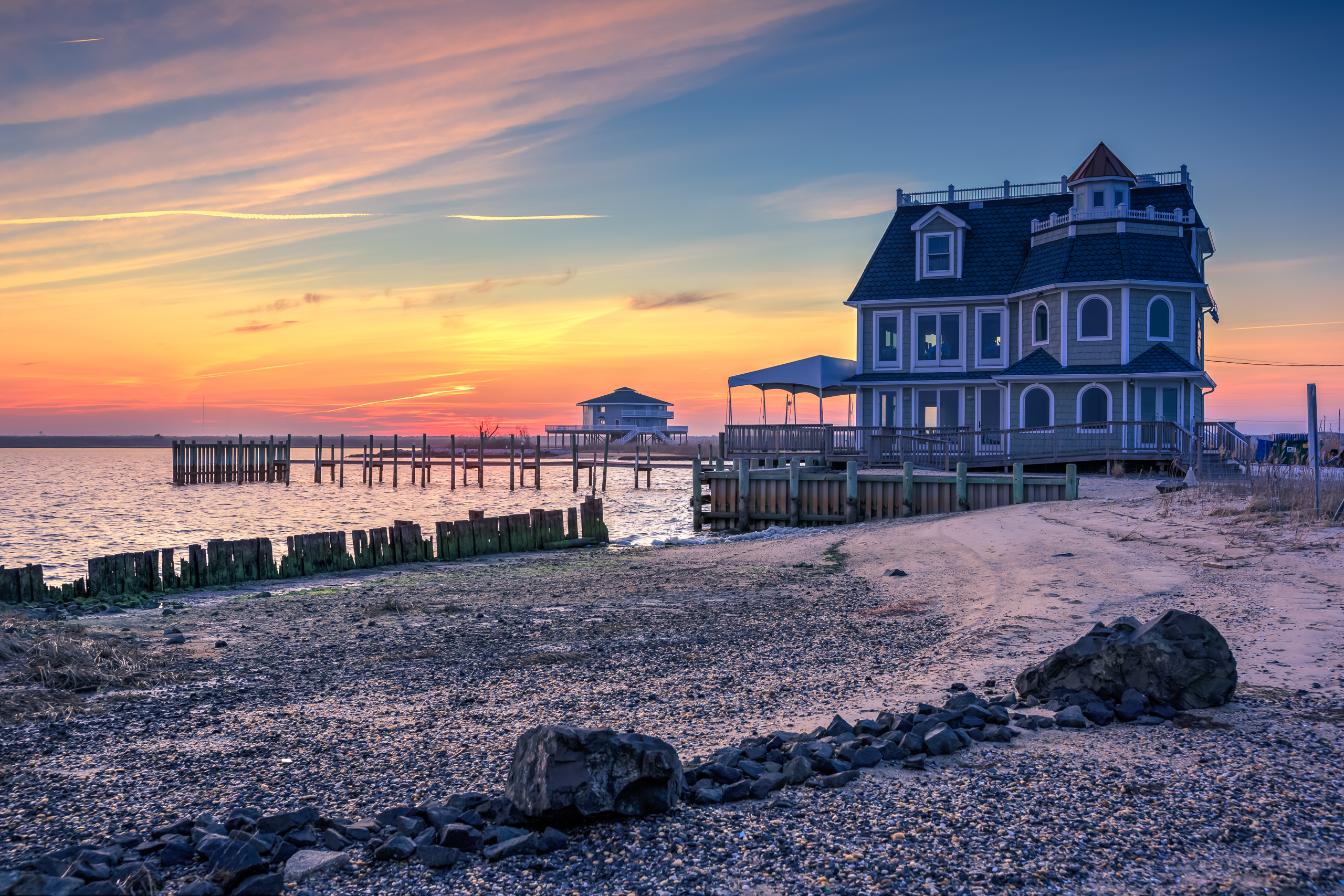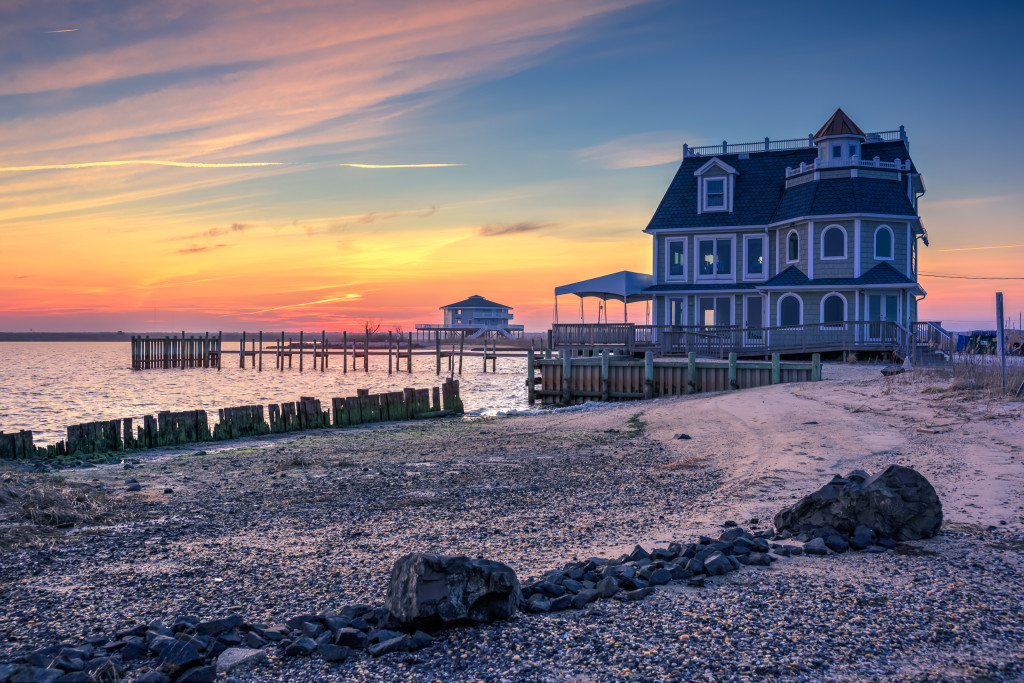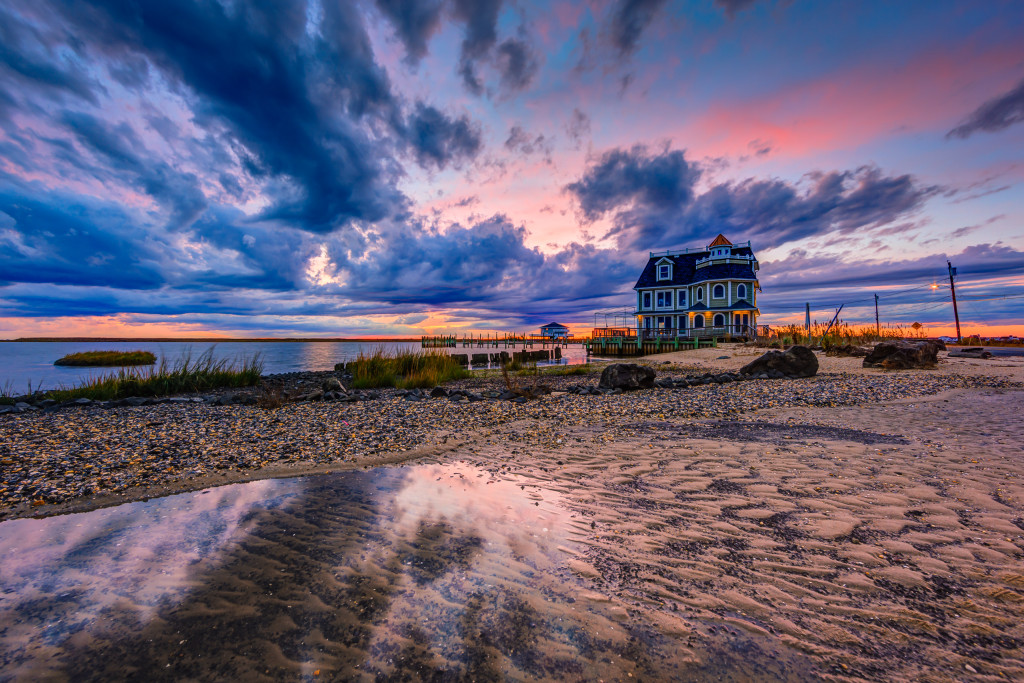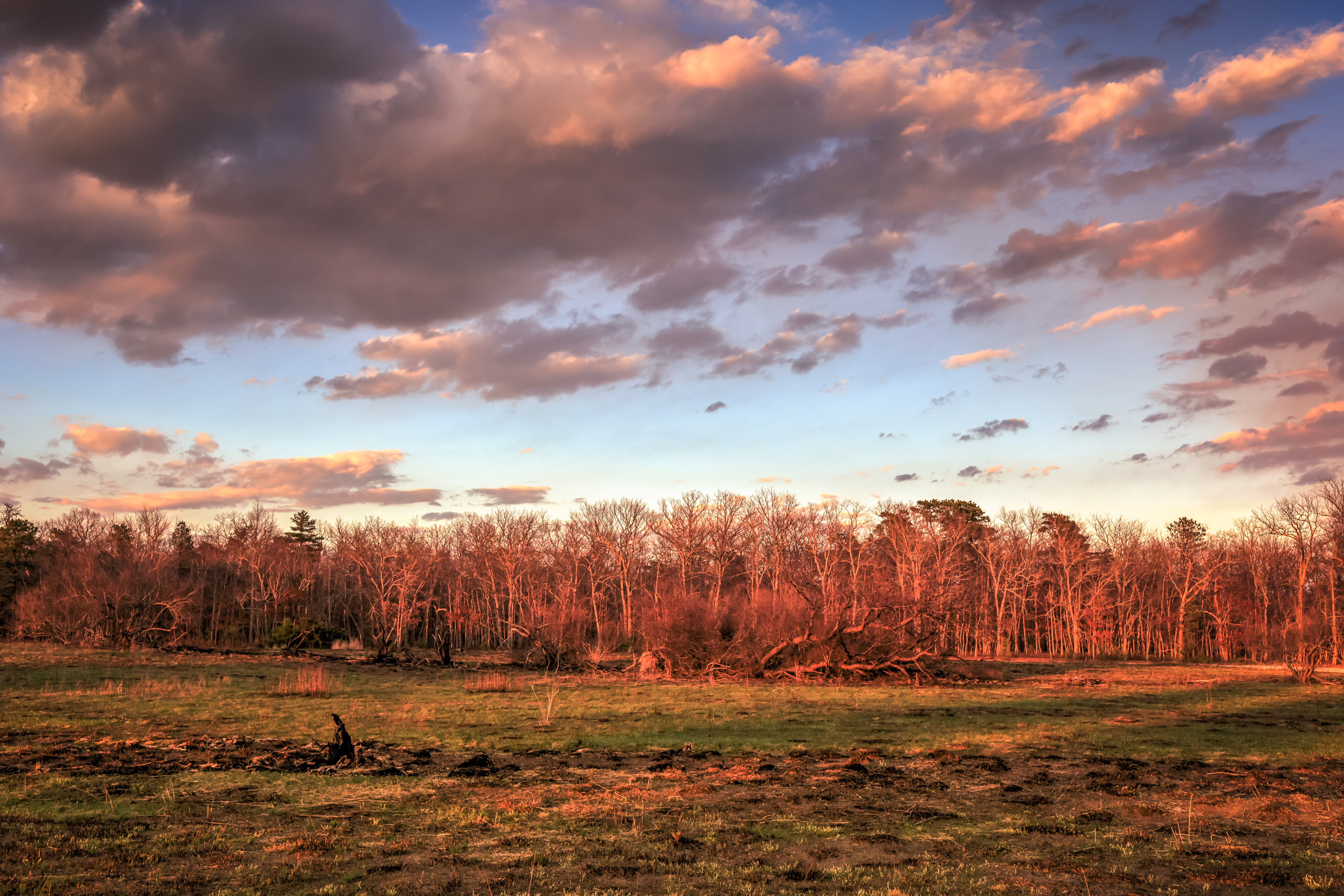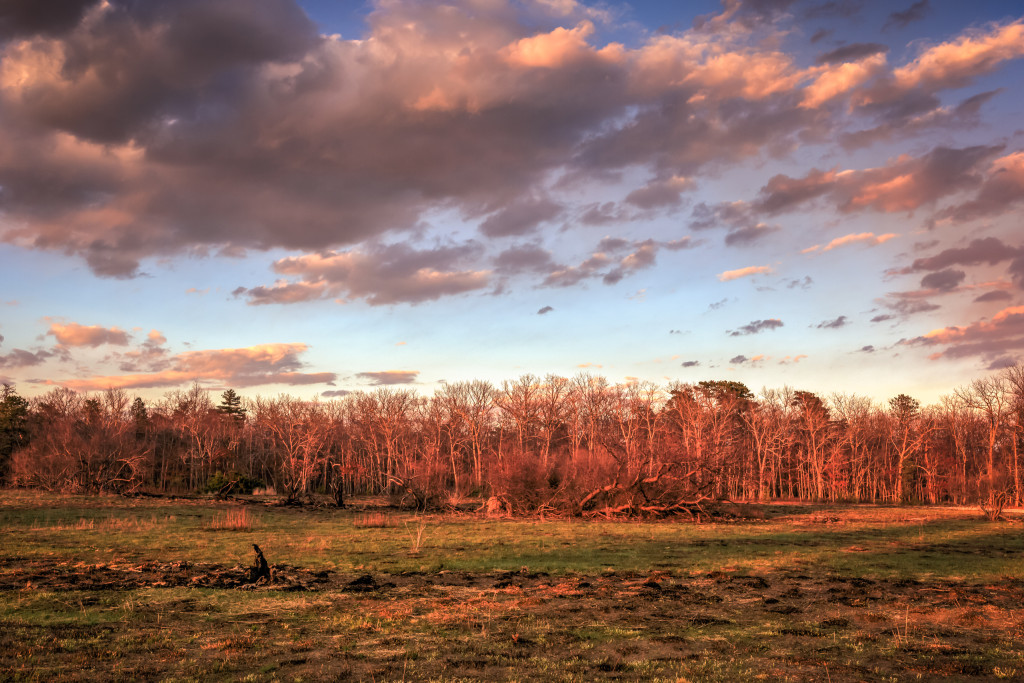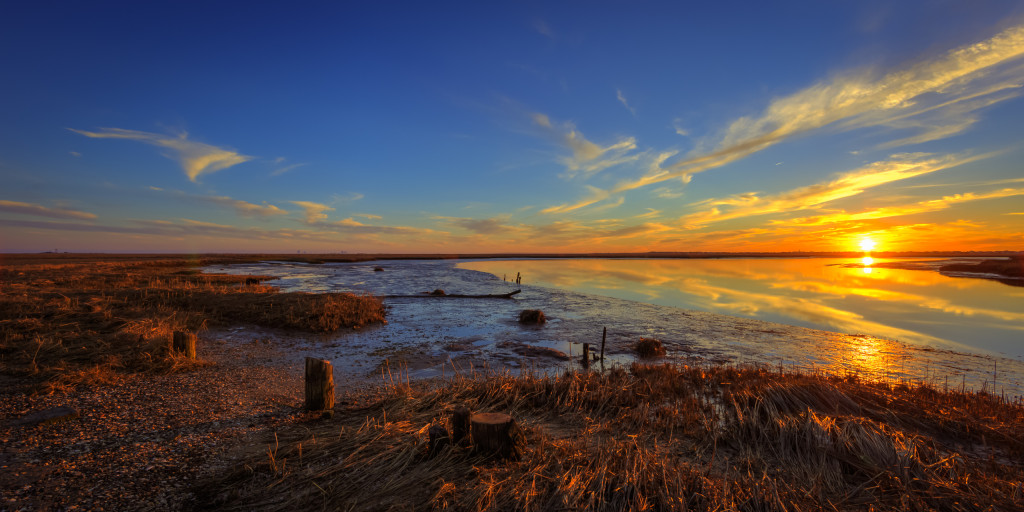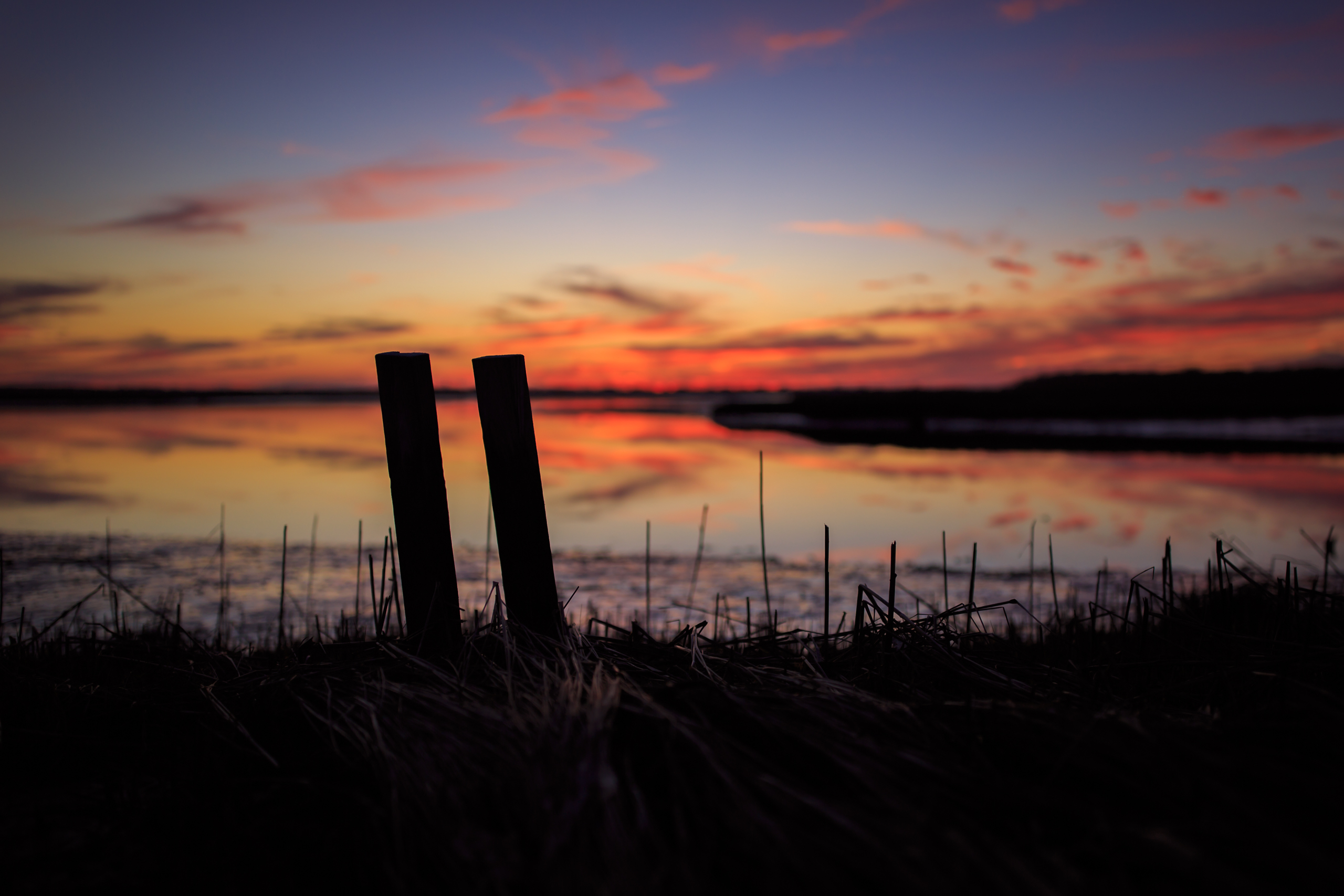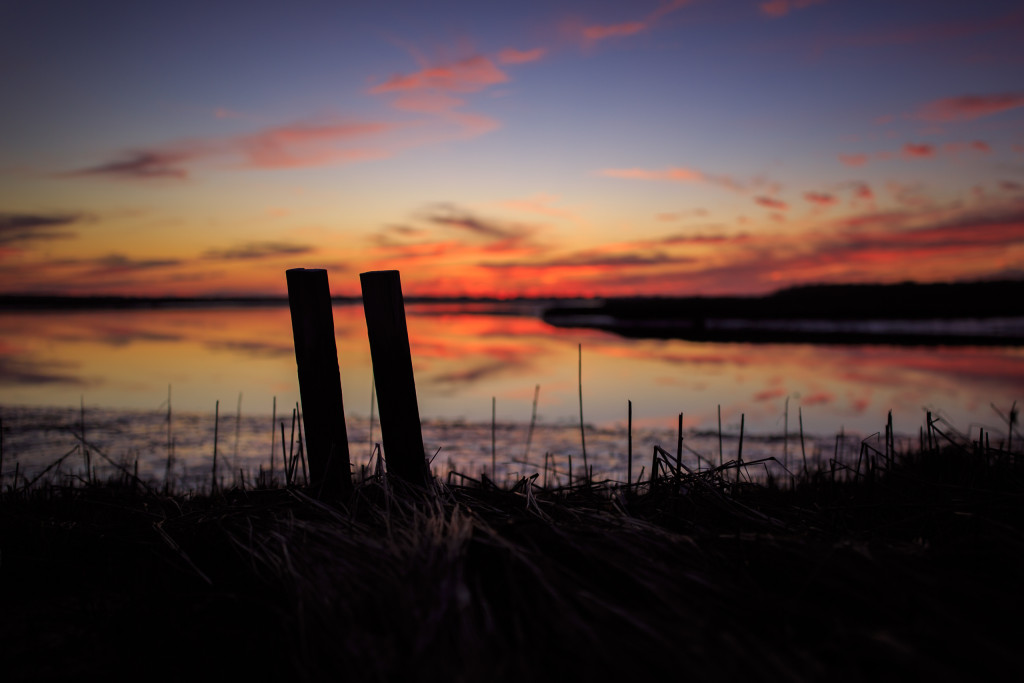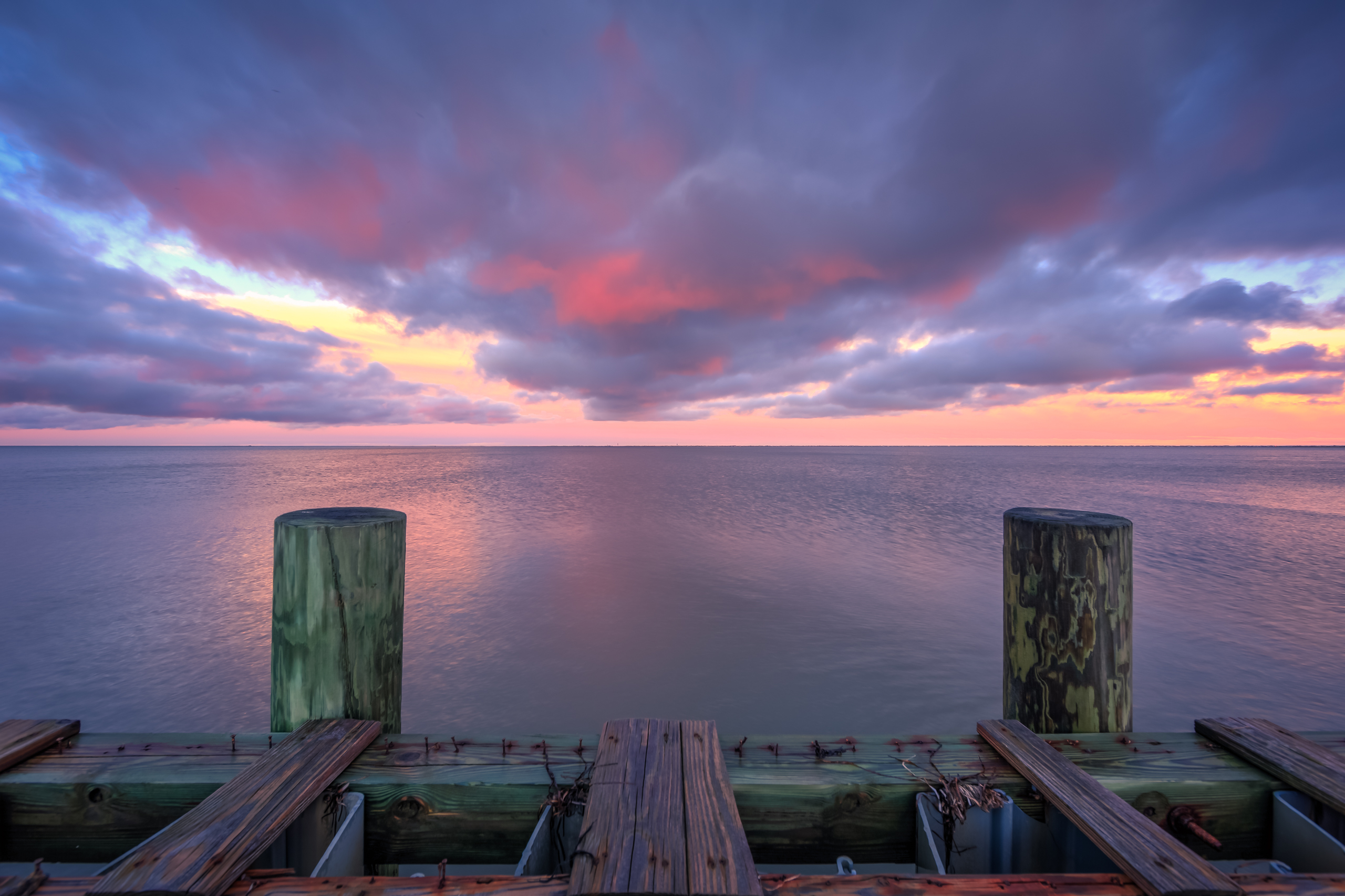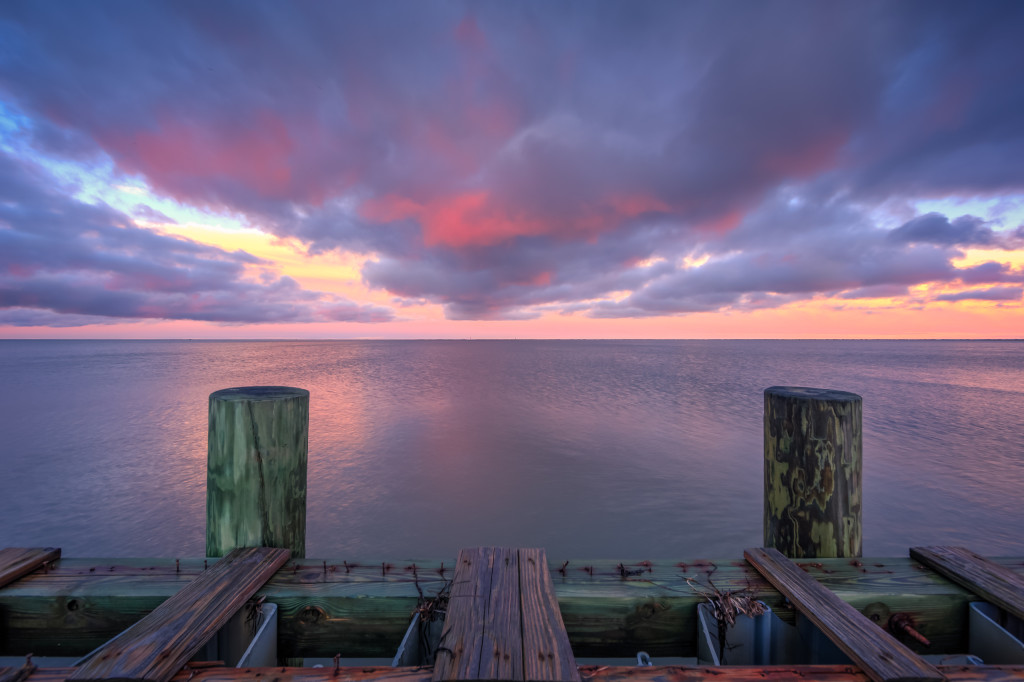
Wild weather bore down on Surf City’s Sunset Park yesterday afternoon. I was fortunate enough to be out storm chasing with JC of Weather NJ fame, and we set up shop on a favorite Long Beach Island bay beach. With a dead west exposure over Barnegat Bay, winds were already ripping from the same direction, and a well defined shelf cloud was easily seen contrasted by the dark brooding cloud shadows behind it. Most striking, however, was the eerie green hue that illuminated the roiling bay water. It was an unnatural savage green, amped by full afternoon sun pouring in unfiltered from the south that was magnified as it bounced off the cumulonimbus cloud bottom. This, in effect, created lighting conditions that would be something akin to millions of pool table lights draped only feet over the bay. It was one heck of a sight. I’m sure my Snapchat followers could hear my excitement. (Not to mention a few expletives born of exuberance.)
No less than two minutes after popping off the photo above, the gust front made landfall, temperatures dropped 20 degrees within 10 seconds (no exaggeration), and the winds went from about 35 mph sustained to ~60 mph. Severe storm criteria is defined as 58 mph winds or greater, and we were certainly there. Of course, the lion’s share of thunder and lightning slipped just to our north, but man it was fun being out there. Talk about a charge of energy. Here’s a short film JC shot to give you a sense of the sandblasting wind. (That’s me standing out there trying to capture cellphone footage.)
Interested in buying? Purchase
